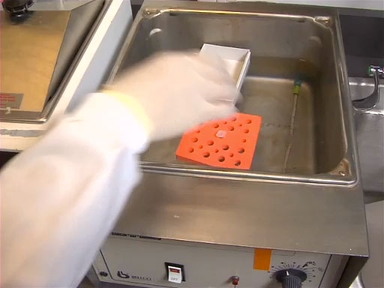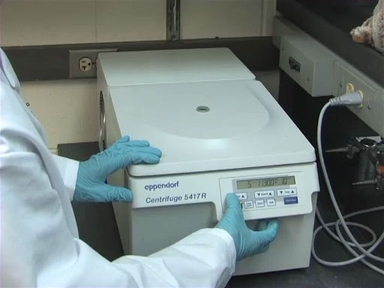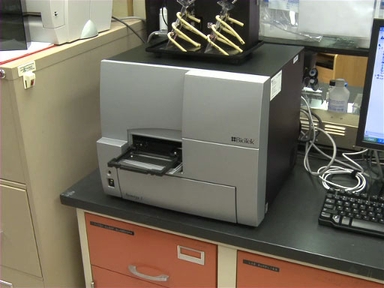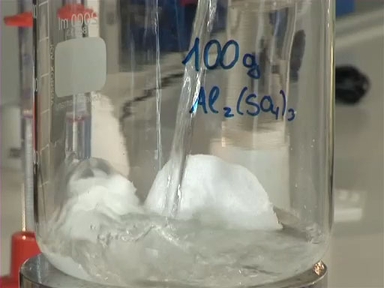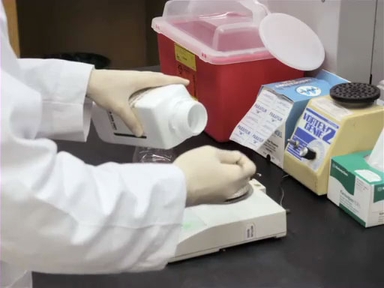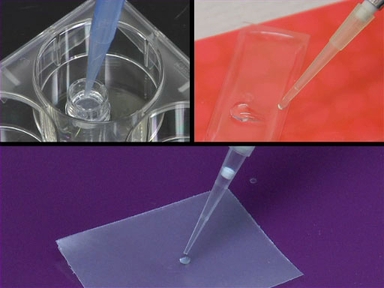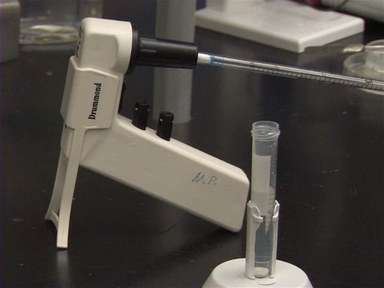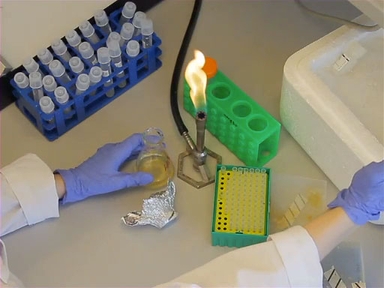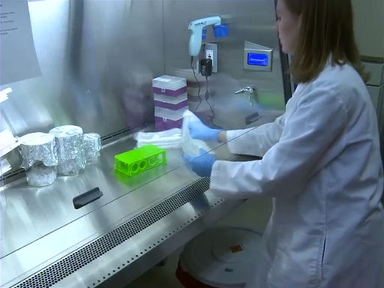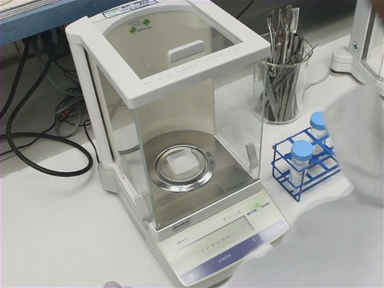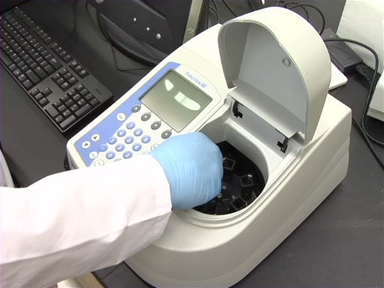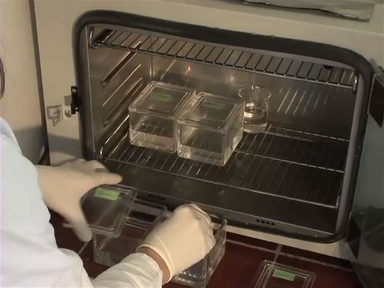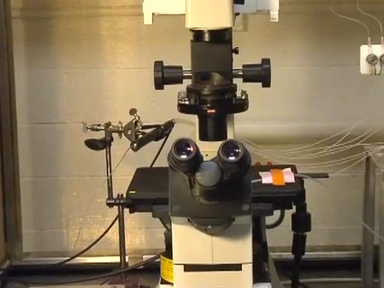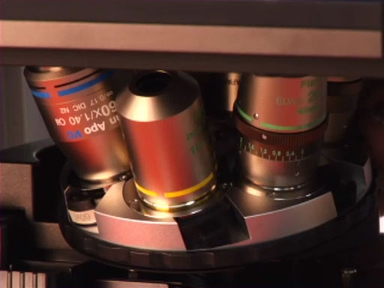There are many ways to regulate temperature in the lab. Sometimes reagents need to be heated, cell cultures need to be maintained at specific temperatures for optimal growth, and animal body temperature needs to be regulated during or after surgical procedures. This video will take a closer look at some of the ways and reasons a scientist might want to heat things up and the specific temperatures used to warm samples and reagents.
First, it’s important to note that in common laboratory procedures, we commonly talk about temperature in measurements of degrees of Celsius, or Centigrade. Like the other metric units-of-measurement used in science, the degree Celsius is one of the International System of Units standard for measuring temperature.
The thermometer, as you probably already know, is the instrument used to measure temperature.
To get the most accurate temperature reading of a liquid you are heating or chilling, immerse the thermometer at least 10-15 cm, or about 4-6 inches below the surface. Then carefully clamp or otherwise secure the thermometer in place, taking care that the instrument is at least 5 cm, or about 2 inches, above the bottom of the container and at least one thermometer width from the side of the container.
If you are stirring the liquid, make sure that the thermometer is not going to be bumped by the stir bar, otherwise, you could have a hazardous mess on your hands.
Read the liquid temperature indicator at eye level. When reading a thermometer, take care not to touch it along the shaft. Your body heat can affect the accuracy of the measurement.
Next, let’s review some common temperatures at which many experiments take place.
Depending on the type of work performed in your laboratory and the type of equipment housed in your lab, the ambient temperature of the room will normally be between about 20-25 ˚C. It can generally be assumed that an experiment is to be performed at room temperature if no temperature requirement is otherwise indicated. Room temperature is often abbreviated in protocols as, you guessed it: RT.
When you are confronted with an “in vitro” procedure, the experiment usually has to be conducted at 37˚C. Processes that are carried out “in vitro” involve tissue, cells, or extracts and attempt to mimic the conditions that exist inside an organism. In vivo experiments, on the other hand, are performed with the intact organism, and since mammals have a body temperature of 37 ˚C, “in vitro” cell culture experiments are typically carried out at this temperature.
At temperatures above 56°C, proteins unfold, a process called denaturation. This can be useful for a variety of reasons, including opening changing a proteins shape for easier identification by a detection antibody.
Water and some water-based, or aqueous, solutions boil at approximately 100 °C. It can also be a good temperature at which to dissolve reagents that are difficult to bring into solution at room temperature.
Frequently, an experimental protocol will indicate that certain steps need to take place at a specific temperature.
Experiments run at the bench are carried out at about 20-25°C, or room temperature.
At room temperature, most reagents and cell cultures are stable although some reagents need to be protected from light, some experiments need to be performed in a hood to maintain sterility, and some assays need to take place within a humid chamber to prevent the experimental tissues or reagents from drying out.
When your protocol says, to “thaw to cells or a particular reagent”, use a water bath set to 37 °C for slow and even warming. Unless your protocol indicates further heating, be sure to remove your sample from the water bath as soon as the last ice fragment has melted.
If protocol indicates that “pre-warmed media” or other pre-warmed reagents should be used, a 37 °C water bath also is useful for keeping solutions at a constant, warm – but not hot -- temperature.
In order to keep your solutions free from contamination or dilution from the surrounding water, use a foam floating rack to thaw frozen aliquots of cells or to warm microliter volumes of solution. If a more secure tube holder is preferred, a metal rack can be used for this purpose as well.
For larger volumes of liquid, plastic racks or metal clamps can be used for holding samples upright in the water bath.
When you are instructed to incubate mammalian cell cultures, it usually means to place the cells in a 37 °C incubator, with a 5% carbon dioxide atmosphere, and a water tray to keep that keeps the incubator at about 95% humidity.
Bacterial cells are also sometimes cultured at 37°C, in an incubator, a warm room. A shaking incubator can be used when you want to quickly expand bacterial cell culture numbers, while decreasing culture time By shaking liquid cultures, you ensure that bacteria receive ample nutrients because they don’t sediment at the bottom of the tube.
For very rapid heating or boiling, hot plates have traditionally been used. Now that microwaves are commonly found in the lab, they can be used to quickly boil aqueous solutions as well.
Now let’s take a look at some of the reasons you might want to heat things up in the lab.
Heat fixing is a simple and quick way to affix certain biological samples, like bacterial cells or biomacromolecules, to a glass slide before staining. Here you can see some chromosomal spreads that were made possible via heat fixation.
Heated stirring of the liquid solution into which you are trying to dissolve a solid reagent can help speed up the process, like the powdered agar that is being dissolved here.
Many live cell experiments require at least one incubation period. The Incucyte incubator allows real time imaging of cell growth, without the perturbation of the cells that can occur when culture containers are removed from the incubator.
Live cell imaging can be performed with desktop microscopes as well. Here cells are maintained in an imaging incubator while their activity before and in response to the addition of an experimental stimulus is being viewed and recorded for later analysis.
You’ve just watched JoVE’s introduction to regulating laboratory temperatures at 23°C and above.
In this video we reviewed: some of the most common pieces of lab equipment for heating cells, animals and solutions, how to decide which piece of equipment to use for warming cells or solutions, and some different reasons temperature may need to be regulated during an experiment. Thanks for watching and remember handle your thermometer with care!
